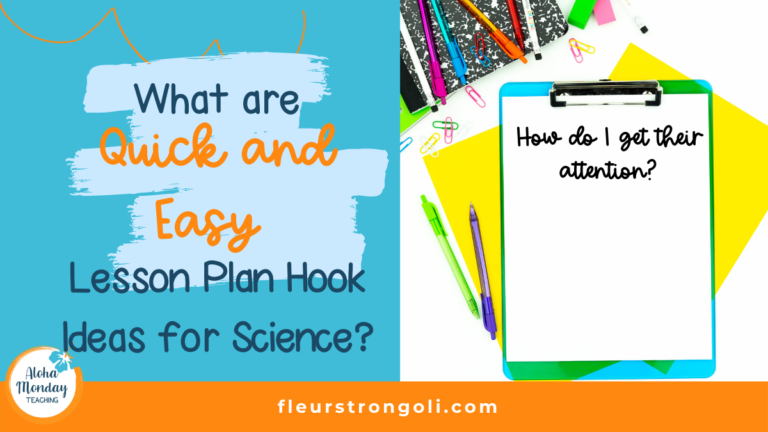5 Areas to Ensure Science Projects Best Practices in the Classroom
How do we make sure we are using science projects best practice when our students are working? How do we plan and prepare for science projects? And how do we manage those days when science projects are all over the classroom?
In the first two blog posts in this series, I shared an overview of routines and the beginning of class routines. We are in the “during class” routines part of this series.
First five blog posts in the classroom routines series:
What Are the Important Routines for Classroom Management in the Science Class?
How to Have a Successful Beginning of Class Each Day
3 Ways to Take Notes in Class that Keep Students Engaged
5 Independent Work Ideas and the Routines Students Need to Know
3 Must-Dos to Run Your Science Lab Day with Science Lab Safety in Mind
In this post
We will go over five areas to ensure that we are using science projects best practices. We’ll talk about planning the project, presenting it to students, how to manage when they are working, organizing and storing materials, and sharing their science projects. I will also give some examples.
Be sure to get your free guide 7 Daily Must-Do Routines to Run Your Science Classroom Like a Pro today!

Disclosure: This post may contain some affiliate links for your convenience. As an Amazon Associate I earn from qualifying purchases with no cost to you.
Planning the science projects
Science projects are a lot of fun and allow students to be creative. So we want to make sure we plan a project that is aligned with standards and allows our students to show what they know or learn.
Here are some questions to consider when planning a science project.
- What is/are the standard or standards you are working on?
- What concepts are included in this standard?
- What skills (think science and engineering practices) do you want students to use?
- What are the preferences for learning in your classroom (multiple intelligences) that you want to gear towards?
- What product will students make to show what they learned?
- How much time will you allow students to work on this project?
- Will they work alone, in partners, or in a group?
- What resources or materials will we need?
- How will I grade it?
Here is an example using a climate change project I created for my students.
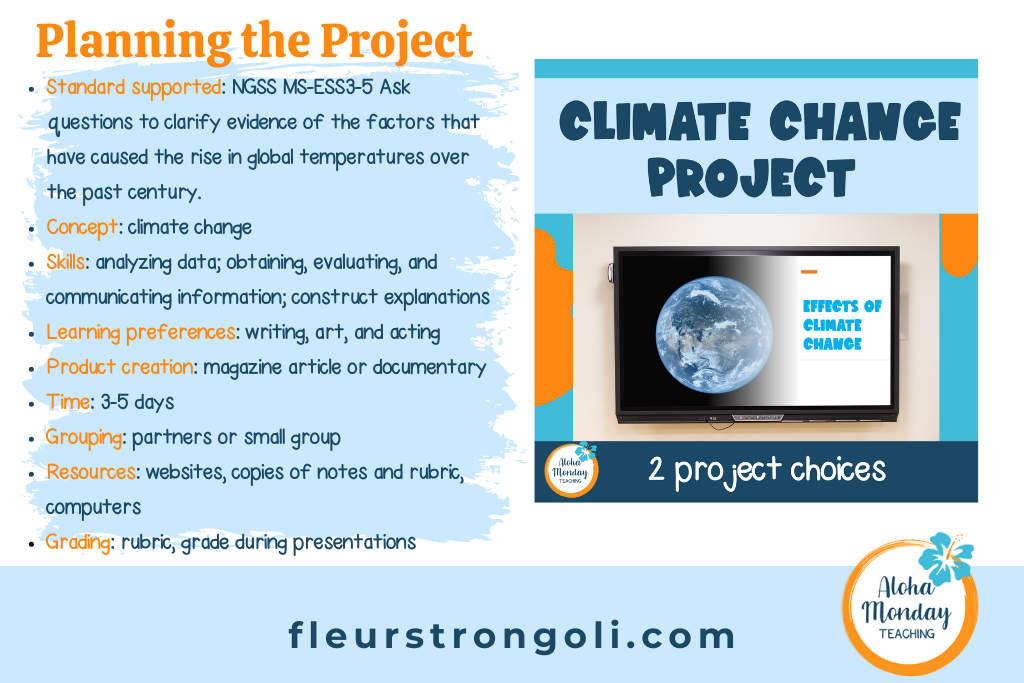
Standard supported: NGSS MS-ESS3-5 Ask questions to clarify evidence of the factors that have caused the rise in global temperatures over the past century.
Concept: climate change
Skills: analyzing data; obtaining, evaluating, and communicating information; construct explanations
Learning preferences: writing, art, and acting
Product creation: magazine article or documentary
Time: 3-5 days
Grouping: partners or small group
Resources: websites, copies of notes and rubric, computers
Grading: rubric, grade during presentations
Once you have your project planned and scheduled, it’s time to prepare the materials. You’ll want to have your copies made, have materials available for students, and upload any digital components or copies of the project to your online classroom platform (like Google Classroom).
Presenting the science project to your students
You’ll want to present the project to your students so they know exactly what is expected of them. They need to know the purpose of the project and how it ties into what they are learning.
I like to give them a copy of the information while I am showing them a Powerpoint or going through the papers on the document camera. Go step by step so students.
I use a PowerPoint to show my students. Here is the order I typically present a project to my students:
- Purpose (story line- in the climate change project they are climatologists)
- Part 1– Research (I also show them the paper they will complete and where to find the links)
- Part 2– Project (I go over the requirements, choices, and rubric)
- Part 3– Presentation (I let them know that they will present to the class)
- Timing– I tell them how many days they have in class
- Grouping– This is the part they always ask about, so I hold off on questions until the end. I let them know that they will work in a small group or with a partner.
- Questions– and finally question time
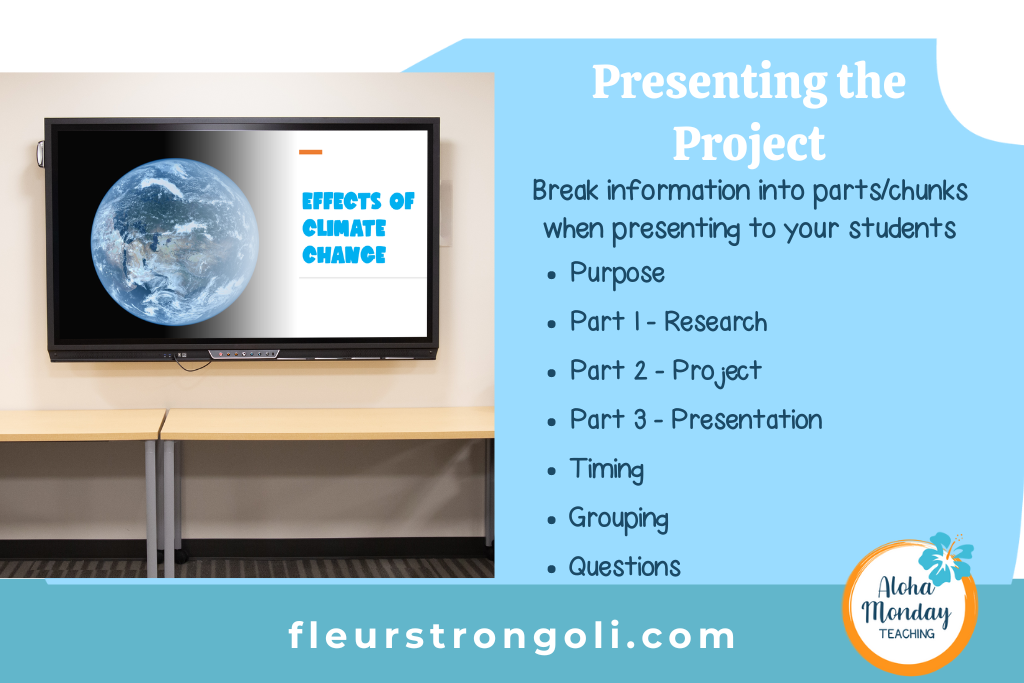
It is really important to chunk the information and have a visual so students know and can see what is expected of them. Before continuing the project each day, be sure to review the expectations and answer any questions that come up.
Managing Students while they work on science projects
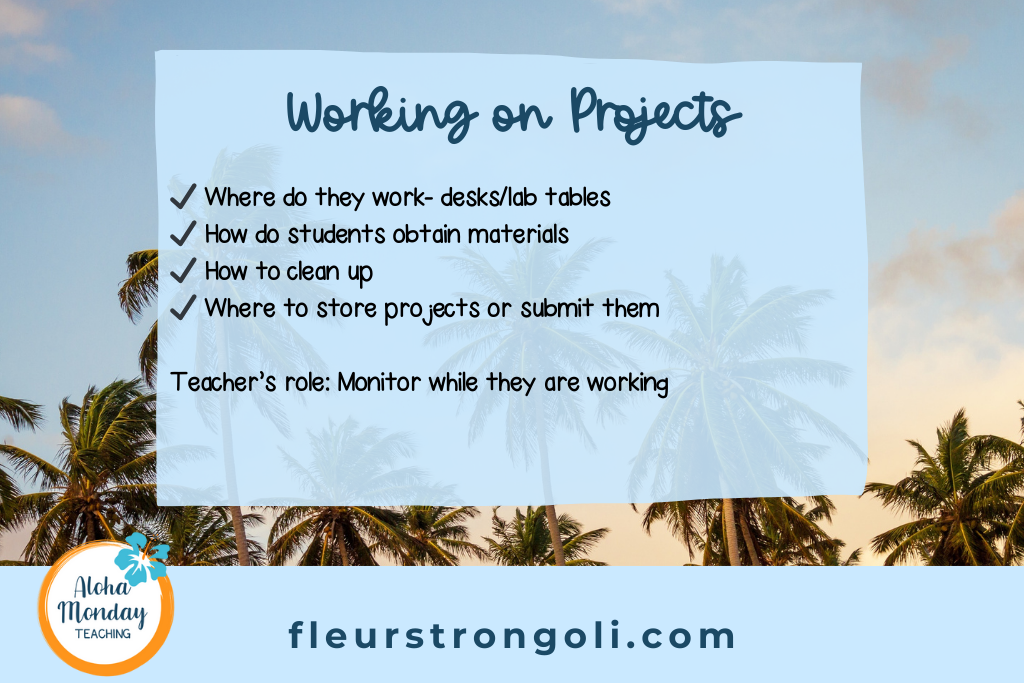
Before students begin working, tell them where they can work, how to obtain materials, and how to clean up.
When working with a group or partner, students may want to work at desks or lab stations. I give my students a choice. Sometimes I will tell them which lab station to work at or I limit the number of students at a lab station. My limit is four students at one station.
Depending on the type of project, you might have materials distributed or have an area where they can collect and return materials. For the climate change project they simply need their computers and packets. But for a project that requires art supplies, like the 3D Cell project, I have that in a designated area that students can access.
Give students time to clean up their materials. They should know where to put work that is in progress. Let’s go over that in the next section.
Be sure you are circulating the room as they work to keep students on task and to help with any questions. That is always the best classroom management strategy when students are working.
Organizing Materials and Storing projects
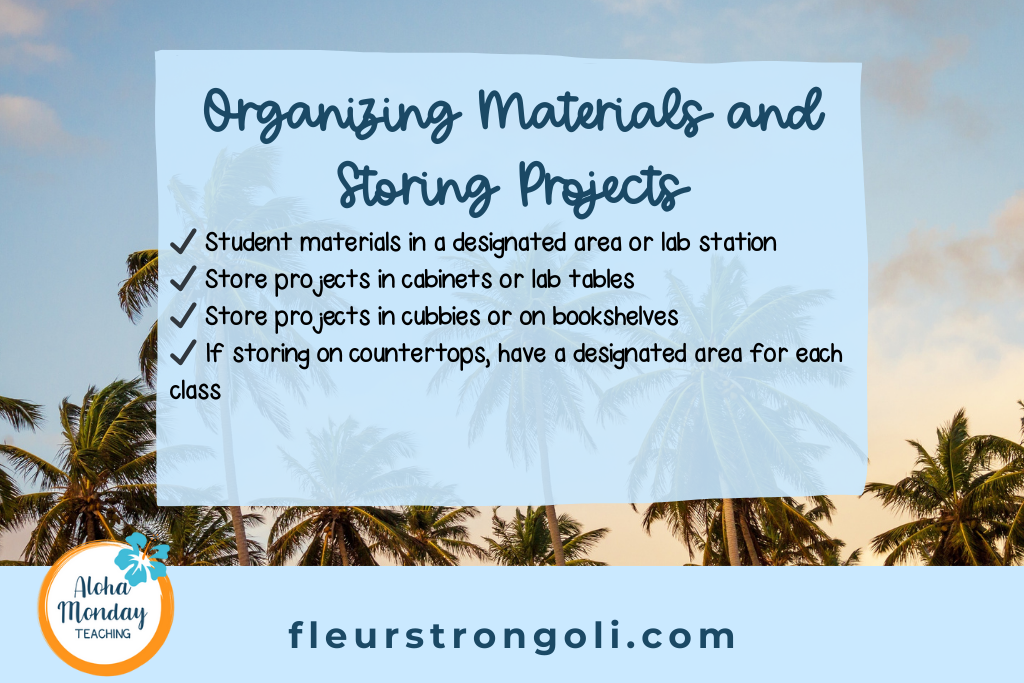
Some science projects require more organization and storage space than others. Here are some ideas on organizing materials and storing projects:
Materials can be at a lab station and stored in tubs. You might already have an area set up in your classroom that holds all materials that students might need. This allows for easy access and cleaning.
You can store projects at lab stations, inside of lab tables, or on shelves/cubbies in the classroom. If you do, be sure to have a place for each class period. I am fortunate to have a huge classroom with a lot of storage. I have a lab table for each class period so they can store their projects inside of it. Other teachers have counter space and enforce that students do not touch the projects. In one of my previous classrooms, I stored projects in cubbies.
Sharing science projects
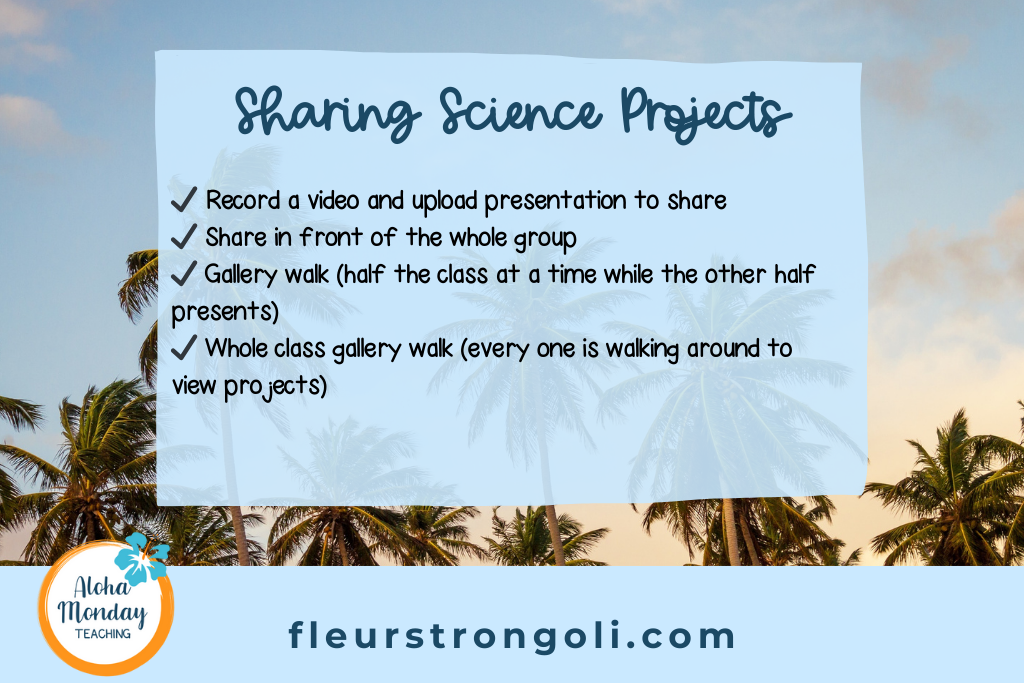
It is finally time to share the projects that students worked on. There are several different ways to share projects. Students can record a presentation (like the documentary in the climate change project). Or they can present it to the class. Another way to present is with a gallery walk.
When presenting to the whole group, be sure students are being respectful audience members. The students presenting might show their video, pull up a slideshow, or use the document camera to show their project. When students are presenting, this is a good time to grade their project with the rubric.
Gallery walks are another great way to present projects. I like to do this by dividing the class into half. Half of the groups will present while the other half rotates to hear their presentation. I am able to walk around to each group and hear their presentation.
If it is a viewing of projects, like the 3D cell project, I have students put their project on their desk and the whole class walks around to view each project.
To manage this, you’ll need to tell them the expectations of the gallery walk. They should always walk, there should be a direction they follow (clockwise or something), listen when someone is presenting, and be sure to set a timer if rotating to different groups. Again, you’re walking around the room to make sure students are on task and being respectful. It is also a good time to grade what you can in a gallery walk. Bonus tip: for something like the 3D Cell project, I take a picture of each project so I can grade it later. I just get a head start on the grading.
Wrap Up
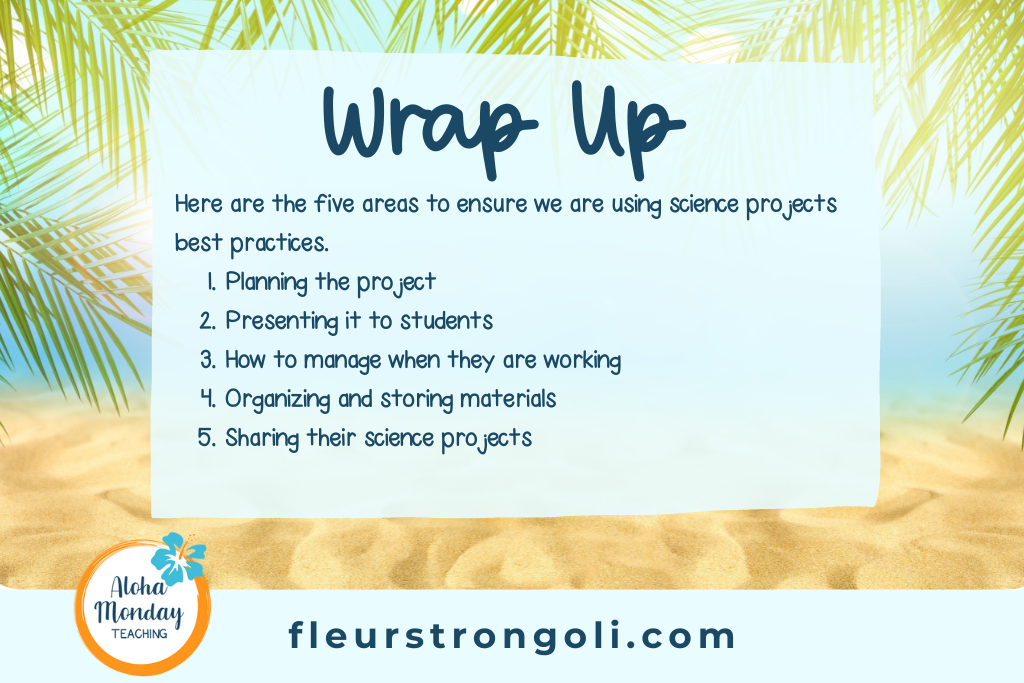
We went over five areas to ensure we are using science projects best practices. We talked about planning the project, presenting it to students, how to manage when they are working, organizing and storing materials, and sharing their science projects. I gave some examples using a climate change project and a 3D cell project.
Your Turn
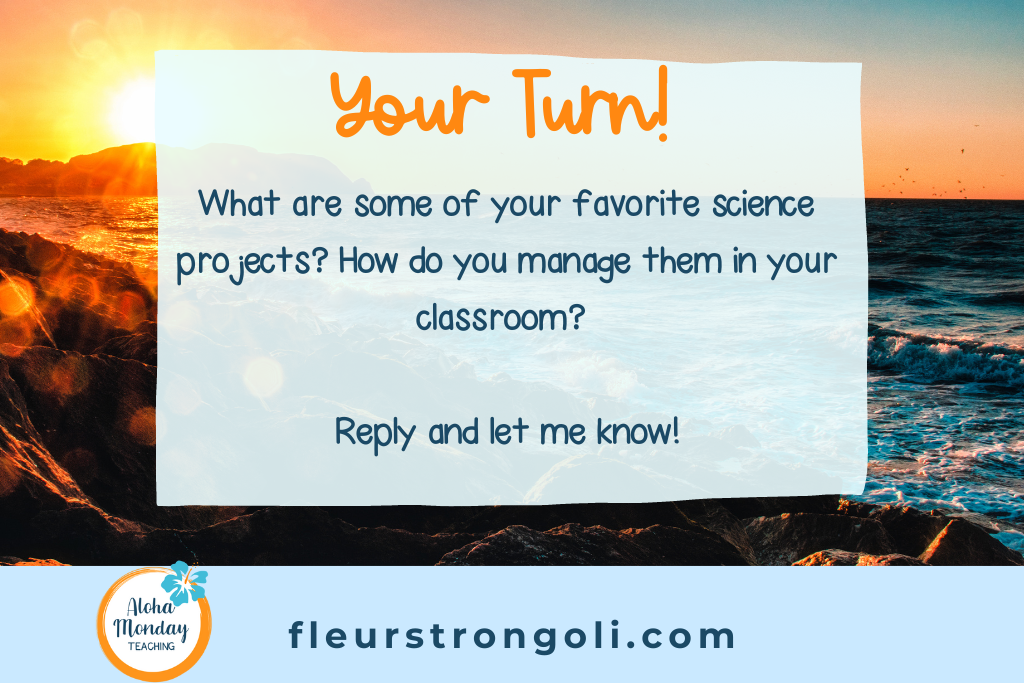
What are some of your favorite science projects? How do you manage them in your classroom? Reply and let me know!
Links
What Are the Important Routines for Classroom Management in the Science Class?
How to Have a Successful Beginning of Class Each Day
3 Ways to Take Notes in Class that Keep Students Engaged
5 Independent Work Ideas and the Routines Students Need to Know
3 Must-Dos to Run Your Science Lab Day with Science Lab Safety in Mind





